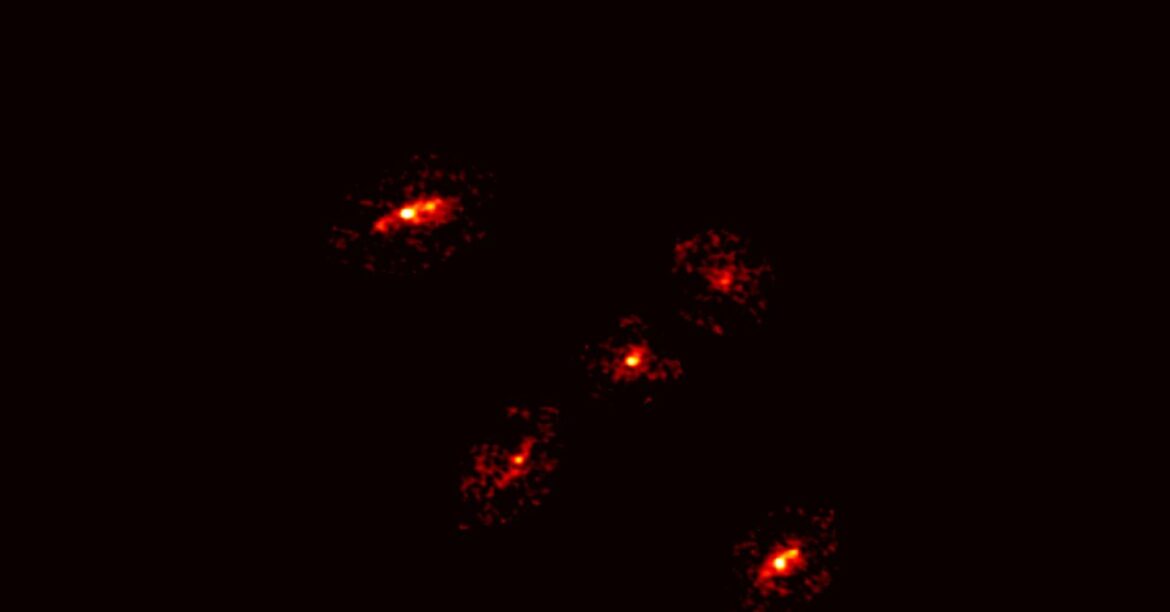The gravitational lensing not only splits the light source, but magnifies it, allowing a detailed view of the light source behind the lens. Thanks to this, the team says that HerS-3 appears to be a bright starburst galaxy—a galaxy undergoing explosive star formation—and was formed at a time when star formation was at its peak throughout the universe. HerS-3 also has a tilted, rotating disk, from the center of which gas is gushing out at a furious rate, the team say.
“Thanks to this natural telescope, we can zoom into regions 10 times smaller than the Milky Way, almost 12 billion light-years away, and in the process infer hidden matter in the light-of-sight,” said Hugo Mesias, a coauthor of the paper, in a statement.
A Giant Dark Matter Halo Revealed
At first glance, the Einstein’s cross of HerS-3 appears to have been created solely by gravitational lensing generated by the four giant galaxies located between HerS-3 and Earth. However, using a precise model of gravitational lensing, the team found that the observable mass of these four giant galaxies is insufficient to explain the arrangement of the five images of the cross: their mass is simply not great enough to produce the visual effect seen.
“The only way to reproduce the remarkable configuration we observed was to add an invisible, massive component: a dark matter halo at the center of the galaxy group,” said lead author Pierre Cox, from the Institut d’Astrophysique de Paris.




